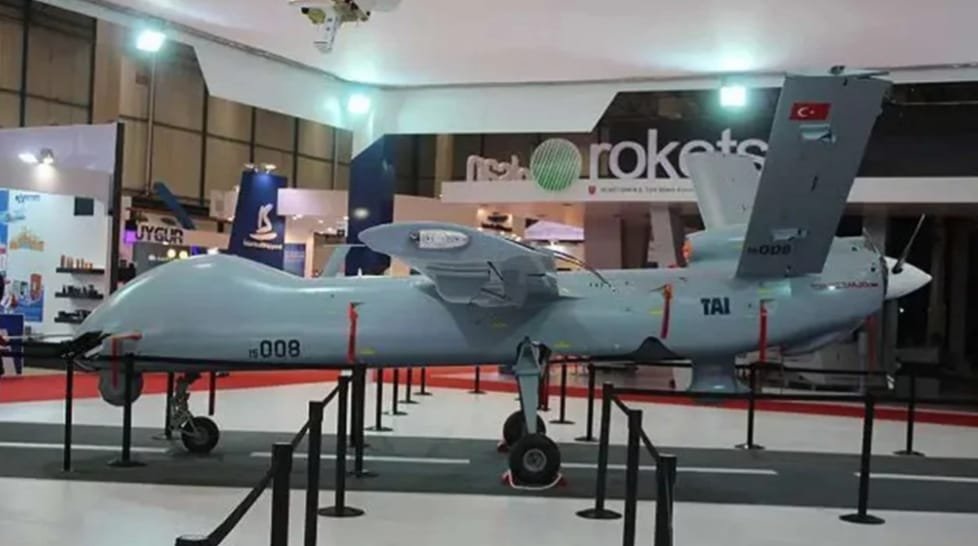
Malaysia Acquires Turkish-made Anka-S Drones to Enhance South China Sea Surveillance
The Royal Malaysian Air Force (RMAF) is set to enhance its surveillance capabilities in the South China Sea with the acquisition of three Anka-S unmanned aerial vehicles from Turkish Aerospace Industries (TAI). This development was highlighted at the Defence Services Asia 2024 exhibition in Kuala Lumpur, where an RMAF spokesperson provided updates on the progress of the program.
The spokesperson confirmed that the production of the Anka-S UAVs, specifically designed to meet Malaysian needs, has started at the Turkish Aerospace facilities. To ensure the program remains on track, six RMAF personnel have been stationed in Turkey to directly oversee the production and development processes. Indeed, according to the Military Balance 2023, the Malaysian government established an air force squadron in 2021 to operate the new UAVs.
While details on the training of RMAF personnel for the Anka-S were not disclosed, the spokesperson assured that all preparations were progressing according to the pre-established schedule. The focus is on equipping the UAVs with specialized systems tailored to Malaysia’s strategic needs, particularly in the area of maritime surveillance.
Additionally, the RMAF spokesperson indicated that although there are no immediate plans to acquire additional Anka-S units beyond the initial three, the Air Force is closely monitoring the progress in the development of TAI’s Anka-3, a more advanced unmanned combat air vehicle.
Discussions regarding potential additional acquisitions are still at the preliminary stage of intergovernmental negotiations, according to a representative from Turkish Aerospace. This sentiment was echoed by Turkish Deputy Defense Minister Dr. Celal Sami Tufekci during an interview on the sidelines of the exhibition. Dr. Tufekci confirmed the ongoing installation of mission-specific equipment on the Malaysian Anka-S models and the concurrent training of RMAF personnel.
The TAI Anka is a family of unmanned aerial vehicles developed by Turkish Aerospace Industries primarily for the Turkish Air Force. Named after the Phoenix, a mythological creature known as Zümrüd-ü Anka in Turkish, the Anka was envisioned in the early 2000s for aerial surveillance and reconnaissance missions. It has evolved into a modular platform equipped with synthetic aperture radar, precise weapons, and satellite communication.
The basic version, Anka-A, was classified as a medium-altitude long-endurance UAV for reconnaissance missions. Introduced in 2010, Anka received its first contract from the Turkish Air Force in 2013, which requested further studies in advanced uninterrupted intelligence, reconnaissance, and communication technologies. The aircraft underwent a lengthy development phase to introduce a national mission computer, national flight control system, synthetic aperture radar, indigenous engine, and friend or foe identification system. Anka-B made its first flight in 2014 and completed factory tests in 2015. In 2017, Turkish Aerospace Industries introduced Anka-S, and the aircraft entered service with the Turkish Air Force.
The composite airframe of the Anka-S consists of a monoblock fuselage, detachable wings, V-Tail, retractable landing gear, redundant control surfaces, avionics, payload bays, and service doors. The sandwich skin structure is reinforced by composite or metallic frames, ribs, and supports. Propelled by a pusher-type heavy fuel engine, the aircraft is equipped with fuselage fuel tanks and a fuel system, ice protection system, environmental control system, lighting system, redundant electrical system with battery backup, and harness system.
The composite structure of the Anka-S integrates an indigenously developed fully autonomous flight control computer to provide autonomous waypoint navigation and flight control. The autonomous system also enables the UAV to automatically return to a pre-defined location in the event of a loss of communication with the ground control station.
The Anka-S is equipped with an electro-optic color day camera, electro-optic/forward-looking infrared/laser rangefinder/laser designator and spotter camera, as well as a synthetic aperture radar/ground moving target indicator (SAR/GMTI) and inverse SAR radar, along with satellite communications and electronic intelligence systems.


